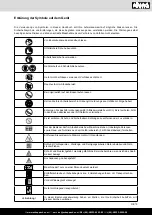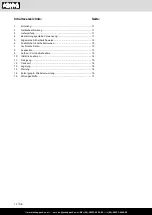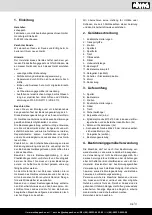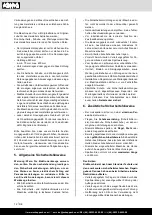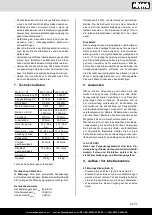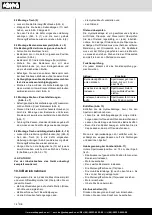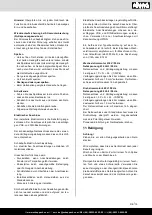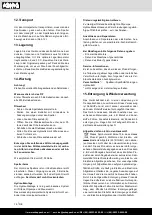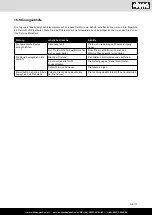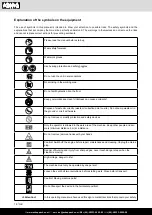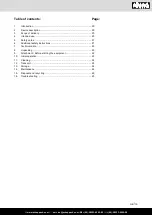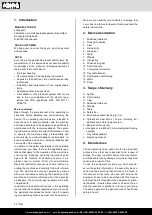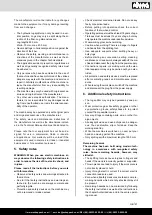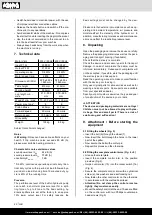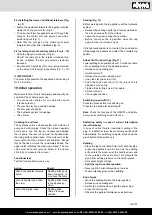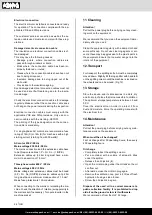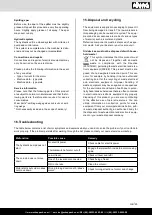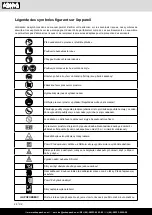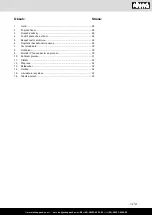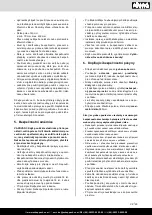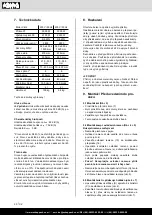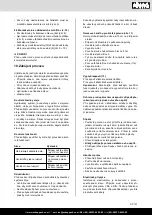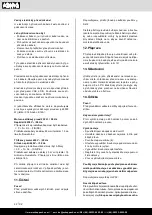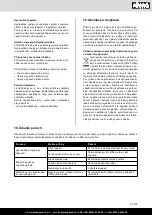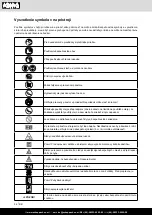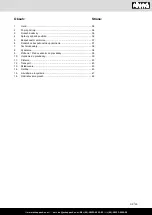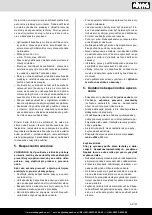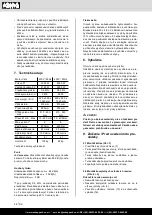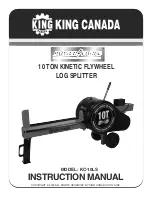
www.scheppach.com /
service@scheppach.com /
+(49)-08223-4002-99 /
+(49)-08223-4002-58
GB | 23
Venting (Fig. 13)
Before working with the log splitter, vent the hydraulic
system.
• Release the venting cap (8) by a few revolutions so
the air can escape from the oil tank.
• Leave the cap open during the operation.
• Before you move the log splitter, close the cap
again in order not to lose any oil.
If the hydraulic system is not vented, the enclosed air
will damage the gaskets and with it the complete log
splitter.
Stroke limit for short logs (Fig. 11)
Lower splitting knife position about 10 cm above table.
• Move splitting knife to the desired position
• Release one operating arm
•
Switch motor off
• Release the second operating arm
• Undo the star grip screw (11a)
• Push the stroke set rod (9) to the top until it is
stopped by the spring
• Tighten the star grip screw (11a) again.
• Switch motor on
• Check upper position
Switching on and off (13)
Press the green button for switching on.
Press the red button for switching off.
Note
: Check the function of the ON/OFF unit before
every use by switching on and off once.
Restarting safety in case of current interruption
(no-volt release).
In case of current failure, inadvertent pulling of the
plug, or a defective fuse, the machine is switched off
automatically. For switching on again, press anew the
green button of the switch unit.
Splitting
• Place the log on the table, hold it with both handles,
press the handles down. As soon as the splitting
knife enters the wood, push the handles down and
to the outside at the same time. This prevents the
wood from putting pressure on the holder plates.
• Only split straight cut logs.
•
Split the logs in vertical position.
• Never split in horizontal position or across.
• Wear protective gloves when splitting.
End of work
• Move the splitting knife to the lower position.
• Release one operating arm.
•
Switch the machine off and pull the power plug.
• Close the venting cap.
• Observe the general maintenance instructions.
9.3 Installing the claws + additional retainers (Fig.
6 + 7)
•
Fasten the additional retainers (D) together with the
claws (C) on the control arm (Fig. 4)
•
To do so, insert two hexagon screws (c) through the
holes on the control arm and secure each with a
self-locking nut (Fig. 7)
• Note that the prongs on the claws must point
towards each other after installation (fig. 9)
9.4 Installing the table and tray tables (Fig. 8 - 10)
• Undo the star-grip screw (8a) (Fig. 8)
•
Now fit the table (6) in the retainer intended (Fig.
8) and re-tighten the star grip screws previously
loosened.
•
Now hang the tray tables (12) on two screws located
on the side of the table (6) respectively (Fig. 9 + 10)
m
IMPORTANT!
You must fully assemble the appliance before using it
for the first time!
10.
Initial operation
Make sure the machine is completely and expertly as-
sembled. Check before every use:
• The connection cables for any defective spots
(cracks, cuts etc.).
• The machine for any possible damage.
•
The firm seat of all bolts.
• The hydraulic system for leakage.
• The oil level.
Checking the oil level
The hydraulic unit is a closed system with oil tank, oil
pump and control valve. Check the oil level regularly
before every use. Too low an oil level can damage
the oil pump. The level of oil must be checked when
the riving knife is pulled back. If the oil level is at the
lower notch, then the oil level is at a minimum. Should
this be the case, oil must be immediately added. The
upper notch indicates the maximum oil level. The ma-
chine must be on level ground. Screw in the oil dip-
stick fully, to measure the oil level.
Functional test
Test the function before every use.
Action:
Result:
Push both handles towards
below.
Splitting knife goes
down to approx. 10
cm above the table.
Let one handle loose, then
the other.
Splitting knife stops
in the desired po-
sition.
Let both handles loose.
Splitting knife
returns to upper
position.

